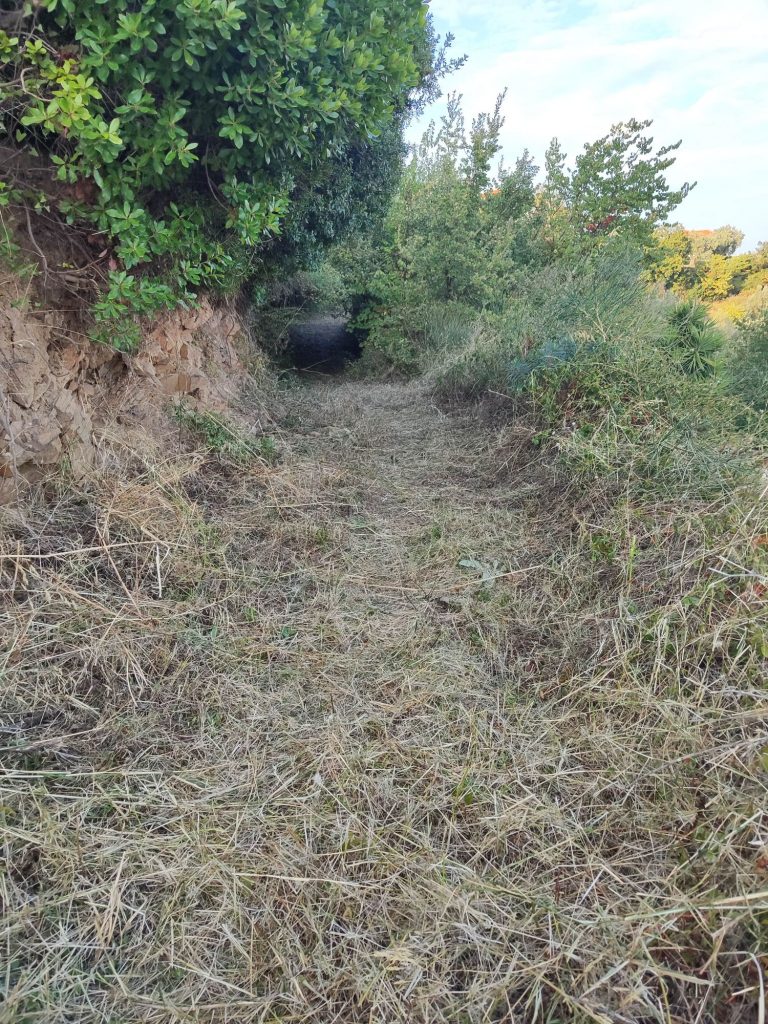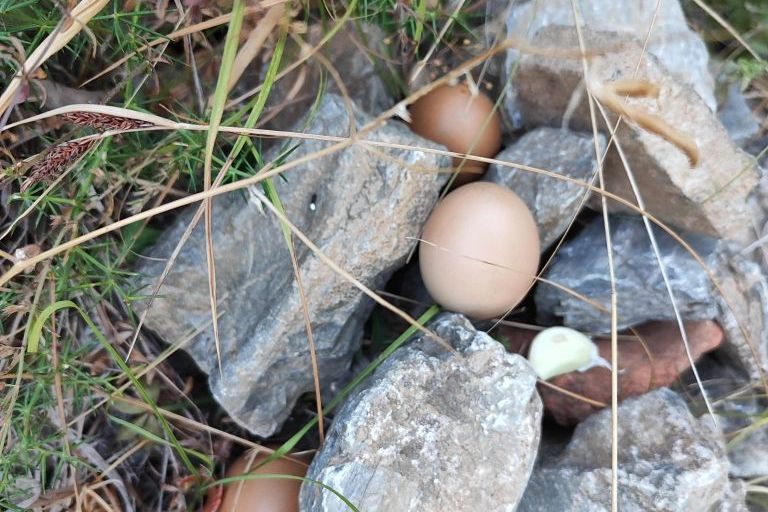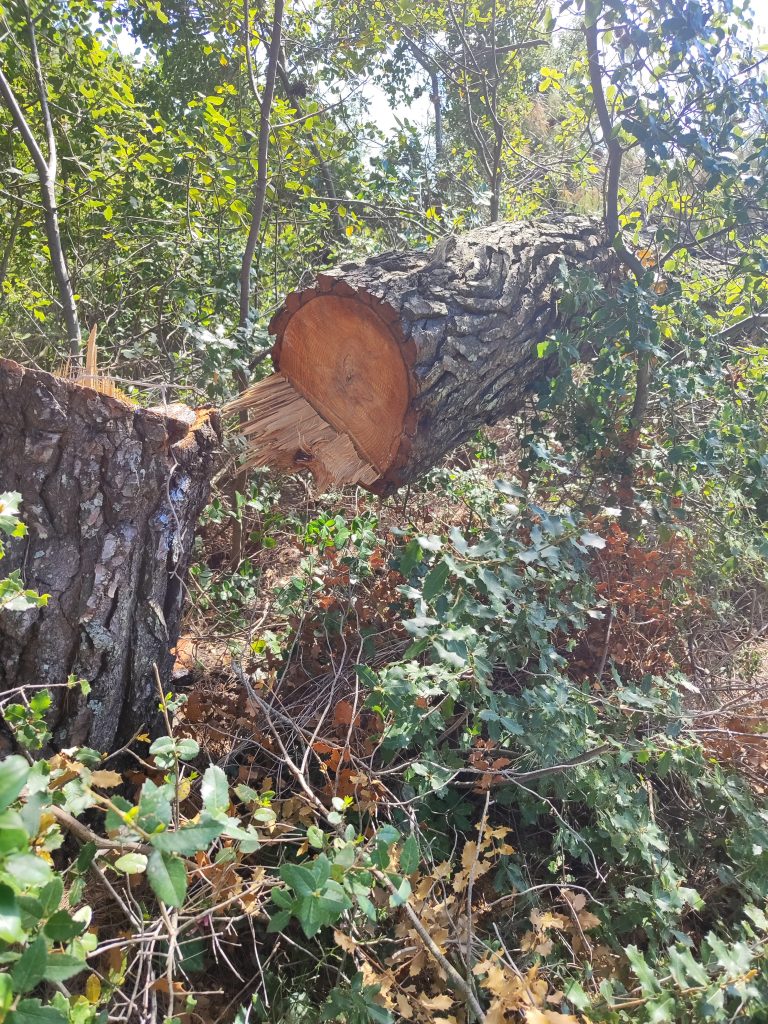It’s been too long since I looked through the Skopelos Trails Walking Guide book in order to update it. Since the 4th Edition was published ten years ago, many changes have taken place. I’m also wondering whether to keep the additional information regarding fauna, bearing in mind we have published detailed books on the same subject (and flora at some point in the near future). What do you think?
So I have systematically read through the entire book and have the following comments:
Inner sleeve email is now skopelostrails1@gmail.com. My request about not using the book for profit or gain has fallen on deaf ears. You know who you are. The PLEASE NOTE box can now be ignored as these routes are regularly maintained. Under Jargon, you can add: Calderimi – Old cobbled ways. The original highways. Kalivi and kalivia (plural) – stone countryside cottages used as shelter during harvest time – they’ve nearly all been renovated and many are now AirB&B.
Any reference to Nastas tchiperadiko should be ignored. It’s been closed for years now. The family brickworks kiln was dismantled too. The son of the original owner carried on this popular business though which is now called Dimitraki and can be found on the monastery road. For the moment at least, a better landmark is the ACS Courier service that is situated at the Ag Reginakis junction.
Walk 1. The Old Stafilos Road, as predicted, is now entirely asphalted (even covering bits of old calderimi) as is the road to Ag Marina spring. After pic.3, I recommend you keep left, passing the boat yard after which you enter a beautiful area of wiggly trees called Lalaria. At the curve, turn right (ahead is a dead end) and up the slope, emerging just opposite the house in pic 4.
Walk 2. The mills are no longer visible having been consumed by foliage.
Walk 4. Agnondas. This route will not be appearing in future editions. Better to use the Kokala/Heliport route up and drop down to Agnondas opposite the goat station.
Walk 6. Glysteri is now an ‘organised’ beach with all that brings with it. As predicted, it is no longer ramshackle. Image 18 of the Kastro car park is historical. These days it is always full of cars and the wording Kastro on the wall has been painted over. This place was a famous traditional music venue from a time that sadly no longer exists. Also Remetzo (up on the left of pic.19) We used to go there not only to drink tchipero but to help Rigas tread his grapes. At least the M4/M25 motorway signs referred to have been removed. However, the mayor thinks the discrete replacements are too small! I know which I prefer.
Walk 7. The covered seating area at Djelili was destroyed in a flood shortly after construction. The T Trails will be phased out eventually (see separate post on this site).
Walk 8. The first mill referred to on this route has sadly been renovated beyond recognition and its sluice above has been filled in. The second mill house has survived though. My ginger-haired friend (pic.35) has gone grey! He still has a dog though and this one also barks.
Walk 9. Believe it or not, the pile of sand referred to (pic.43) is, ten years later, still there!
Walk 10. Tria Plantania. Stis Stathou spring was fenced the last time I was there.
Walk 11. The flat roofed house now has a tiled roof. I haven’t cleared the ‘natural’ route for years. Since the Petrovrissi spring dried up, it is no longer regularly used. The other route was bulldozed and now a few new builds have sprung up. It’s really difficult to walk down as it’s so steep. Better when it was a natural trail meandering up the mountain and roots were our stairs.
Walk 11. Return route 3. The trail behind Vromoneri was always a favourite of mine but since the occupant of a kalivi situated beside it installed a huge dog (as well as pigs and goats) we’ve been unable to maintain it.
Walks 13-16 The Monastery area. The old Dilinia taverna building was raised to the ground and a modern structure has taken its place. For updates concerning the occupants of the monasteries, please read my previous post here.
Above Mon. Sotiros, just below the E Mana tou Nero spring, Spiro the goatherd no longer has his camp. He still looks after his goats though, day after day. Nikos, the other goatherd with whom he shared Palouki, has retired and did not pass on his herd. This is rather worrying as it means the trail to the peak will slowly grow over. Time will tell. The curve above Mon. Sotiros is called Anamniseis (Memories). The trail just above Anamniseis corner which emerges onto the Lower Mast Road, does not continue on opposite. You have to turn right onto the LM road until the end and pick up the trail to the summit there. You can also go straight ahead where there’s a goat trail down to Ag Marina – for the moment at least. Towards Taxiarches, the terrible motorway signs have gone (pic59). Beyond Taxiarches, it is intended to forge a trail to enable a circular route.
Walk 17. Kimissia/Panormos. Opposite Moutero church, the pole where my sign was hung, was sawn down. The sign is now on the olive tree. The steps at the other end of this section have gone and replaced with a slope. The road through Moutero is now asphalted. Pic108. This municipal road has been kidnapped by the owner of the villa at the end of it. He is also discouraging hikers from using this route. The situation has yet to be resolved but is ongoing. Take your chances as it’s not fenced or continue on the main road until a signed dirt road on the left, continue by the goat sheds and down to sea level. Unfortunately it’s a lot longer and not as shady.
Walk 18. At the top of Anania hill, the road has been asphalted, covering a portion of very old calderimi. What to say? No trail was ever found after Platanakia. It must have been a track that closed shortly after the resin collectors ceased using it.
Walk 19. Sendoukia. The motorway sign has been removed (pic.74) but tree culling in the area has make the place look rather ugly. You could return to town via The Adventure Trail. Refer to the Terrain map as to its location.
Walk 22. Old Klima’s aluminium roof is now made of wood (see my post about the T Trails). The wooden bridge on the way down to Loutraki is now made of cement. A lot of time was spent on reopening this portion of trail as it had been closed for many years and was being used as a general dumping ground. The Avra hotel is now called Natura Luxury Boutique hotel. The old mill house beside the stream is a pizza/café called Petrino. There’s a short trail beside the steam at the end of which is a beautiful waterfall.
Walk 23. The Three scarecrows were not maintained after so many years and have disintegrated. Such a pity. Put there by a local eccentric, their clothes were changed regularly and items like a transistor radio, were placed in their hands.
Walk 24. After Magdalene died, her bakery was sold and the property renovated. There is no sign of what this special house used to be. The complex of buildings that were the olive press, were sold and renovate. There is now a picnic area beside the church. The majority of derelict houses have been renovated. In fact, the whole village vibe has changed. The annual street party has stopped and nearly all of the folk who bought and renovated in the 80s and 90s have moved on, resulting in a new generation of inhabitants who have a totally different ideology.
Walk 25. The small café by the bus stop and church is now a taverna. Agnanti restaurant has quite a reputation these days since it was featured on a Jamie Oliver TV programme. The church square up is no longer frequented by the old men of Glossa. No more backgammon. No more lingering for hours over a coffee, beer or tchipero. No longer political discussions. Those days have sadly gone. I never got round to reopening the trail from Barba Stelios’ place down to Perivouliou. The main road is now asphalt. I’m not sure if the trail by the shrine in pic.94 is open.
Walk 29. The road to Keramoto and beyond is now asphalt.
Walk 33. Until the issue at Moutero is settled, this route is closed.
There are new routes that we’ve found and reopened since the last publication plus a planned long-distance trail around the island. As soon as the current stocks are exhausted, the 5th edition will be published.
















